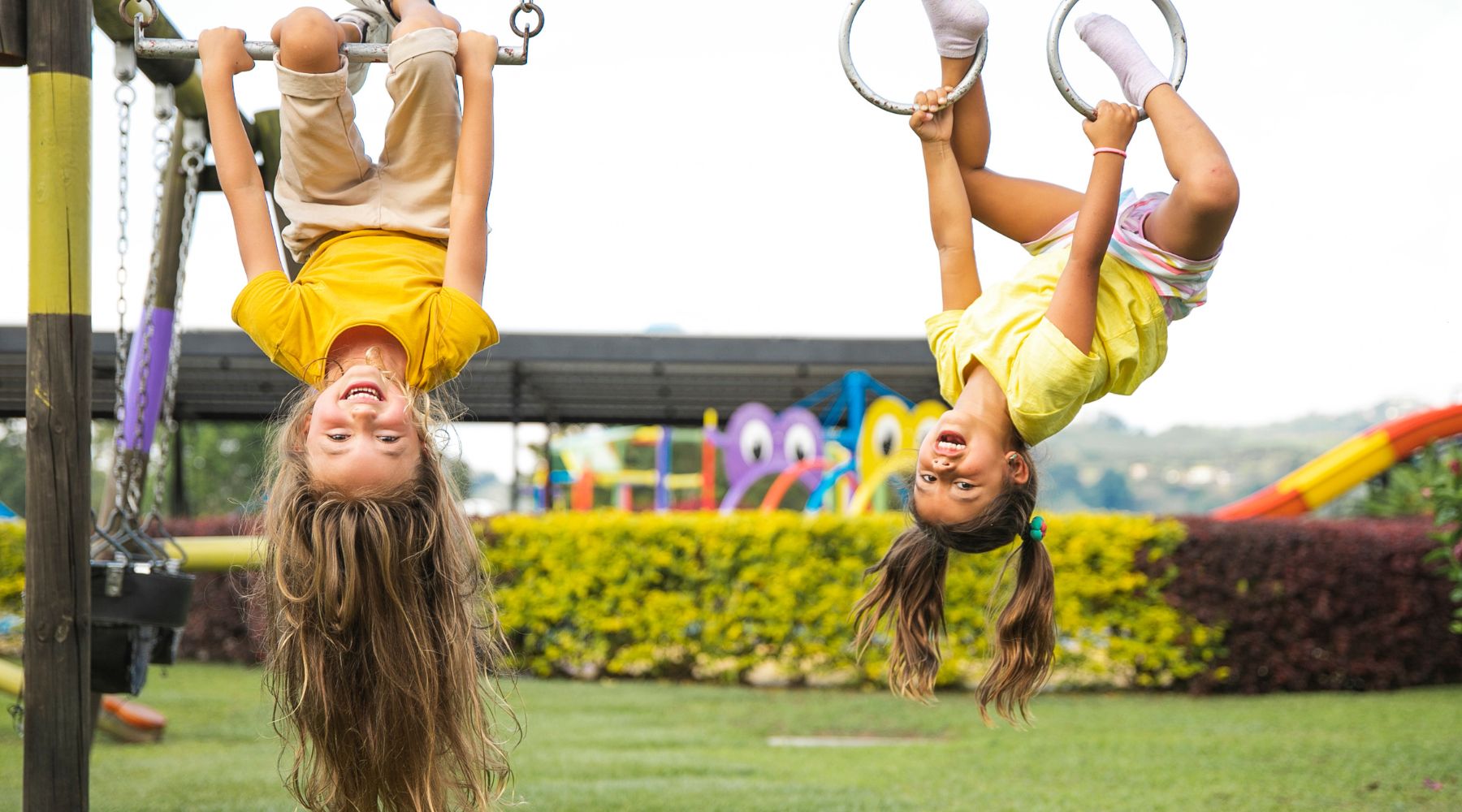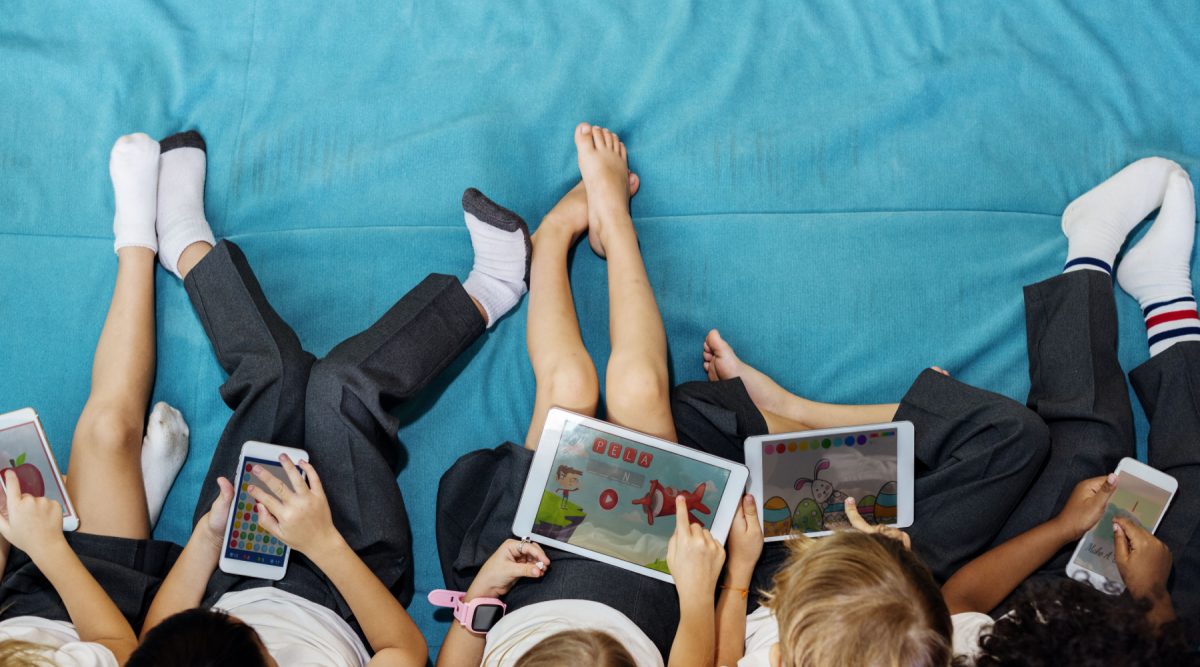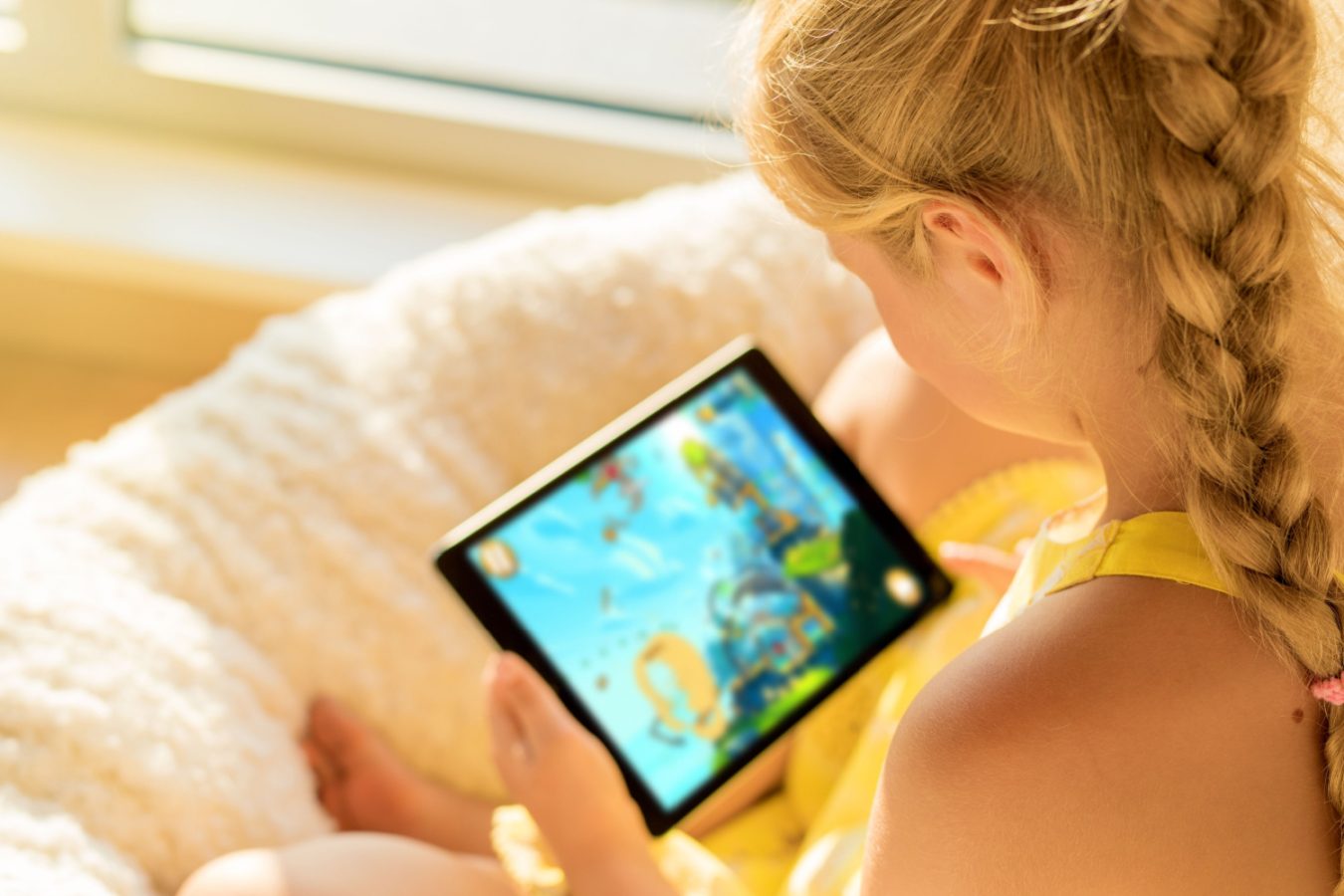
We tend to think that when children are using screens, they are passive or still. Here, researchers explore how screens can help keep kids physically active.
There have been concerns about screens making kids more sedentary and less active since TV was introduced more than half a century ago.
‘Screen use’ and ‘not enough exercise’ are (separately) among the top health concerns Australian parents have about their children.
But screens are not necessarily the enemy of exercise. Our research looks at how screens can help children be physically active.
How much exercise do kids need?
Australian guidelines around how much physical activity children need to do each day varies, depending on their age. And it’s even important for babies to spend time being active each day.
It’s recommended children up to 12 months old have at least 30 minutes of tummy time and as much interactive floor play as possible each day. Toddlers and preschoolers should be active for at least three hours per day, including energetic play.
For children five and above, it’s recommended at least 60 minutes each day of moderate to vigorous physical activity that makes the heart beat faster, including vigorous activities and activities that strengthen muscle and bone.
Our research
Concerns around screens making children sedentary are at least in part based on outdated ideas that position technology as either ‘good’ or ‘bad’. Researchers today are more focused on how screens are used and in what context.
We are working on a larger project to develop online resources for parents about using digital technologies with their children.
In this part of the study, we have been exploring ideas on how to use technology to encourage young children to be active.
We gave a group of 13 families with children under five ideas on how to use technology to help their children be more active. Every week for 12 weeks, they received information and ideas from the federal government’s parenting website Raising Children Network, Playgroup WA and ABC Kids.
From this work, three messages to parents stood out:
1. Children can be active while using screens
We tend to think that when children are using screens, they are passive and sitting still.
But our study showed children can certainly be active while watching. So it is useful to provide space for them to do this and encourage them to move in response to what they are watching. This may run counter to traditional instructions to children watching TV to ‘sit still and be quiet’.
Content that involves music and dance (like the Wiggles) will naturally get children moving. But parents also found it helpful to encourage children to mimic their favourite character’s ‘action moves’ when watching programs such as Spiderman or PJ Masks.
Our study looked at children five and under but older children could use digital games (such as Nintendo Switch’s Sports) that promote physical activity. Or they could use augmented reality apps that get them moving, such as Pokémon Go.

2. Technology can inspire off-screen physical activity
Parents told us they were able to use screens to inspire physical activity after viewing has stopped.
For example after watching Humpty’s Big Adventure parents could encourage children to build an obstacle course. Or watch the Bluey episode Keepy Uppy and then play the game.
This can help introduce variety into children’s physical play, which is important for developing new skills. As we have noted in a previous article, using an idea from a program can also help children transition away from screens without tantrums.
Related article: 3 ways to help your child transition off screens and avoided the dreaded 'tech tantrums'3. Taking videos can keep kids excited about moving
Many adults have watches or apps that record their steps and exercise and this helps them stay motivated to move. Technology can similarly be used to promote children’s activity.
Children in our study loved watching videos of themselves being active. Playing these back immediately or later (and sharing with family), reinforced their enthusiasm about how fun it is to be active. It also encouraged children to keep trying with skills.
You could try filming your child racing on their bike, demonstrating their skills on the monkey bars, climbing a tall part of the playground or working on ball skills.
For older children, you can also record dance, choreography or specific sporting skills such as stroke correction in tennis or swimming.
Parents also reported their children enjoyed using a stopwatch app to improve their time when completing a lap on their bike or tackling monkey bars. Other apps, like maps, can help plan a vigorous family walk.
About the authors
Research Fellow at Curtin University.
Associate Professor, Early Childhood Education Academic Lead at University of Canberra.
Professor of Physiotherapy at Curtin University.
Professor of Education at Australian Catholic University.
This article appeared on The Conversation, and is republished here under the terms of the Creative Commons licence. You can read the original.
Like this post? Please share using the buttons on this page.
Stay up to date with our newsletter here

